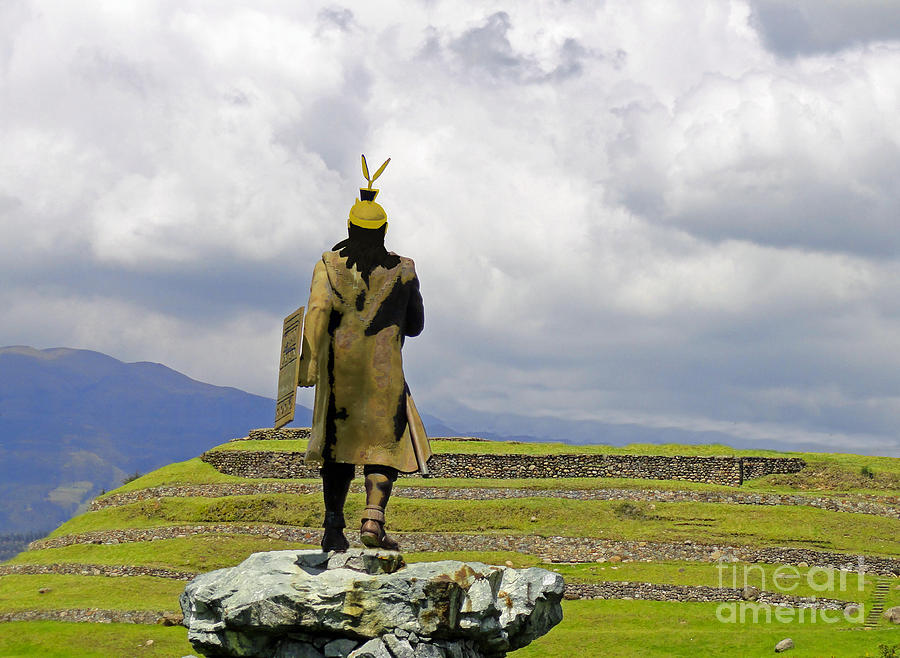It is October, a month that can be interpreted by many in different ways. For some it is the time of the year to think about a costume and get ready to go around the neighborhood to do the famous and all sweet-tooth lovers’ trick or treating. Halloween is the term used by many around the world and this tradition has mainly been taken from North America as they were the ones who somehow started this whole tradition of pumpkin decorating, the deadly zombies and witches.
In Ecuador:
Nevertheless in the southern hemisphere there is a wide variety of traditions, each own to its country. The Mexicans have their Dia de los Muertos, the Ecuadorians have their Dia de los Difuntos which translates directly to “The Day of the Passed Away”. This day is celebrated and commemorated in November, but October is the month where all families start to think about their gatherings.
In Quito and in the whole country of Ecuador, this day is commemorated from a gastronomic perspective. If someone is ever to visit the capital Quito or any city in Ecuador during November, it is very likely that this person will be surrounded by signs in almost every corner and restaurant saying that they offer “Colada Morada” or “Guaguas de Pan”.

Meaning
If you do see this, I strongly recommend you to try both of them as it is the only time of the year in which you will be able to. What makes them so special? Simple.
Colada Morada can be textually transtated as “Purple Pudding”, however its translation is not precisely what you might have in mind. Unlike what you are probably depicting, colada is a type of thick drink made out of local ingredients. Mortiño, a type of blueberry ; red corn flour and the aromatic herb known as Ishpingo are the three main ingredients found in the drink. These are then accompanied by fruit such as pineapple, babaco or peach in general.
Although this drink has existed in Ecuador for more than 5,000 years according to many studies, it is in the latest two centuries that it has been assigned to this time of the year. Some say it is because “mortiño” can only be harvested in this time while others think it is because of the spiritual value.
Regardless of all the theories and thoughts from the citizens, there is one theory in special that has managed to stick around and it is the most relevant until our present time. According to a source, colada morada has always existed during this time as a way to celebrate the harvesting period in agriculture. It was in a way a true and real syncretism of life and death. Through these sort of drinks, our ancesters used to celebrate the journey of life from an Andean cosmovision.

Today
Nowadays, this whole concept has been re-interpreted into our modern society. This journey of life is still celebrated but in the way of remembering our loved ones who have actually been through their journey of life. To emphasize on its symbol and meaning, the so called “guaguas” were created.
These figures represent our loved ones who have departed to heaven. Through this representation, people see this sad memory as something that gives life and meaning to their present.
Somehow this culinary moment is seen as an excuse to share a nice moment together with the family, remembering the good in life and focusing what is good on our nowadays.
That is why we have chosen to share this moment with you. Regardless of the place where you are at! Here a quick look on how to prepare the colada morada and celebrate the day of the departed like a local:

Try it yourself – recipe
Ingredients:
- 1 cup of purple corn flour or black corn. Corn starch may also be used in case you do not have any of the aforementioned flours
- 14 oz of naranjilla pulp or pineapple juice
- 2 cups of blackberries
- 2 cups of mortiños or blueberries
- 2 cups of strawberries
- 1 pineapple, both skin and core
- 2 cups of pineapple cubes
- 1 ishpingo (cinnamon flower)
- 5-6 cinammon sticks
- 4-5 cloves
- 4-5 sweet pepper
- 1 anise
- 14 oz raw cane sugar
- Hierba luisa leaves
- Lemongrass
- 2 oranges
- 12 water cups
- Additional fruits: babaco, peaches, apple and pear
- Put the pineapple skins, the core, cinammon, clave, pepper, raw sugar in a big pot with 8 cups of water and let it boil for 25 minutes
- Add the lemon verbena, lemongrass, and orange peel.
- Reduce heat and simmer for 10 minutes. Remove and strain.
- In a separate pot, add 4 cups of water with the blueberries and blackberries, boil for about 20 minutes. Remove from heat, let cool down until safe to handle, blend and strain.
- Mix the cup of the purple corn flour with 1 cup of the spice pineapple liquid until well diluted.
- Add the strained berry mix, the naranjilla juice, the spiced pineapple liquid and the diluted purple flour mix to a large pot.
- Cook over medium heat, stir constantly to keep it from sticking, bring to a boil.
- Add the pineapple chunks and reduce to simmer for about 10 minutes.
- Remove from the heat, add the strawberry slices (and any additional fruits). Serve warm or cold.
Courtesy of: laylita.com

